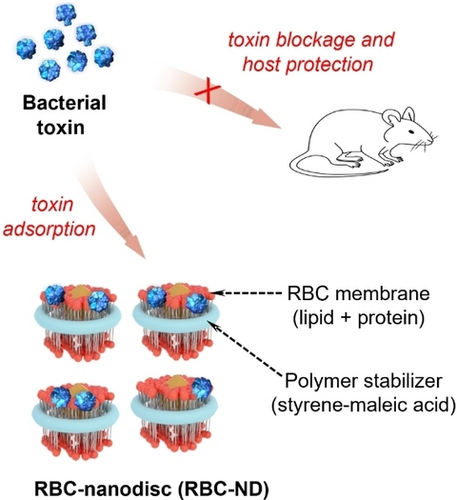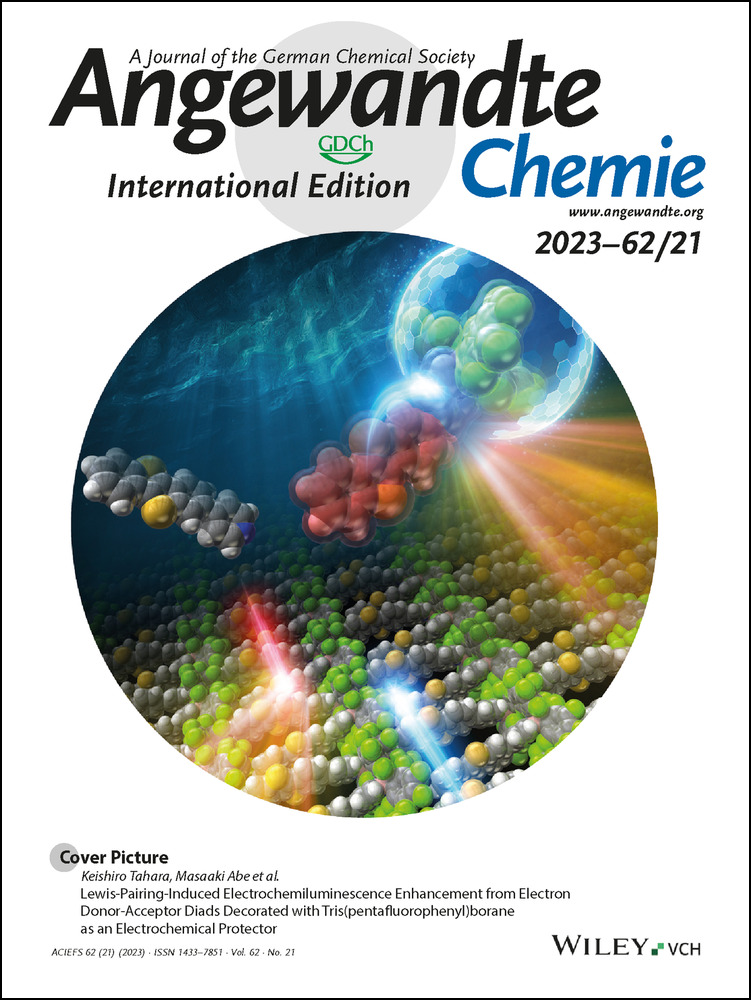Synthesis of Erythrocyte Nanodiscs for Bacterial Toxin Neutralization
Graphical Abstract
Nanodiscs are small discoidal lipid bilayer assemblies and represent an attractive nanomedicine platform. While most nanodiscs are made with synthetic lipid bilayers, this work reports on a nanodisc formulation made with natural human red blood cell membrane and demonstrates its robust application for bacterial toxin neutralization.
Abstract
Nanodiscs are a compelling nanomedicine platform due to their ultrasmall size and distinct disc shape. Current nanodisc formulations are made primarily with synthetic lipid bilayers and proteins. Here, we report a cellular nanodisc made with human red blood cell (RBC) membrane (denoted “RBC-ND”) and show its effective neutralization against bacterial toxins. In vitro, RBC-ND neutralizes the hemolytic activity and cytotoxicity caused by purified α-toxin or complex whole secreted proteins (wSP) from methicillin-resistant Staphylococcus aureus bacteria. In vivo, RBC-ND confers significant survival benefits for mice intoxicated with α-toxin or wSP in both therapeutic and prevention regimens. Moreover, RBC-ND shows good biocompatibility and biosafety in vivo. Overall, RBC-ND distinguishes itself by inheriting the biological functions of the source cell membrane for bioactivity. The design strategy of RBC-ND can be generalized to other types of cell membranes for broad applications.
Open Research
Data Availability Statement
The data that support the findings of this study are available from the corresponding author upon reasonable request.





